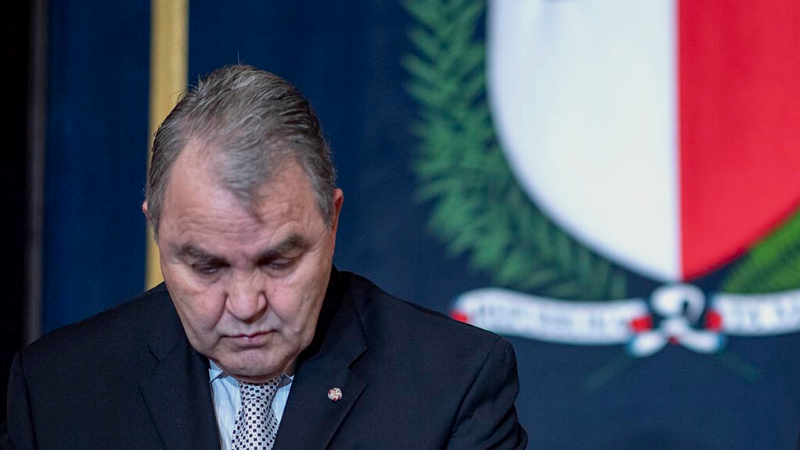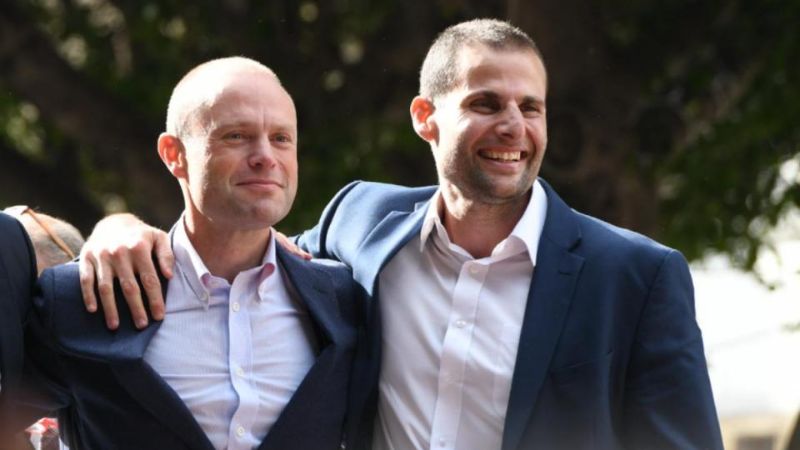The alleged attempt to bribe a Times of Malta journalist by a lawyer representing Yorgen Fenech, who is undergoing court proceedings over the assassination of journalist Daphne Caruana Galizia, has damaged every side involved and led to a plethora of conflicting claims.
Speculation about who and what to believe has been widespread, particularly in legal circles.
Most directly impacted are the lawyers who met the journalist, and the lawyer who allegedly handed the money – if proven, this would be a criminal offence punishable by up to three years’ imprisonment.
It falls under the Maltese Criminal Code’s provisions on bribery in the private sector and the current police commissioner, Angelo Gafa, successfully prosecuted one such case when he was an inspector – the conviction against the person who offered the bribe (the receiver was also prosecuted) was reconfirmed by the court of appeal on 11 February 2013.
The police have already started investigating this time round.
Although the ramifications have yet to play out, the fallout is set to damage Fenech’s defence and put in doubt the lawyers’ retention of the case.
The journalist, Ivan Martin, has also been bruised by the fact that he sent a draft of the article to the lawyers which “was sent to confirm details of information which Fenech’s legal team had provided during a previous meeting,” according to The Times of Malta statement.
The general rule in journalism is to avoid showing drafts of articles to subjects as far as possible, especially investigative articles, for obvious reasons. The admission that the journalist was consulting on the draft text with defence lawyers who have an interest in pushing a particular narrative has raised eyebrows.
How the story develops will now largely depend on what else may be established or revealed, particularly if the police investigation leads to prosecutions.
Unverified information from sources who spoke to The Shift suggests that one of the things that was on the table during the meetings with the lawyers was a leak of a recording from the Malta Security Service of a telephone call that may have a bearing on, or be used to undermine, the credibility of Melvin Theuma, as well as the integrity of his presidential pardon.
The prosecution’s case rests heavily on recordings and testimony of Theuma, the self-confessed middleman in the Caruana Galizia assassination plot.
The defence has long been pursuing an attack on Theuma’s credibility. The allegation has been made, based on a sinuous interpretation of a recording, that Theuma paid a bribe for the presidential pardon.
More recently, an article on Malta Today reported on recordings that may be construed as an indication that Theuma was ‘coached’ by confidante Edwin Brincat (who is also a friend of the former police commissioner) on what to say.
And last August a set of leaked, selective voice recording clips were uploaded on Reddit, a social media platform.
Some media outlets, including The Shift, commendably refrained from reporting on the Reddit clips to avoid publicising leaks designed to mislead public opinion.
The problem with recordings is that any one of them, either in whole or in part, taken in isolation might lend itself to different interpretations. Anyone involved in a recording might be bluffing, or lying, or seeking to extract a confession. For this reason, courts consider or seek corroborating evidence and require those involved to testify and be subjected to cross-examination.
The big question is why – in this case as well as some other high profile ones – the lawyers for the suspected or accused are seeking out the media.
Members of the judiciary generally show disdain for those who resort to the media, seeing it as an unfair attempt to influence the court through press coverage.
So why go to the media and risk fostering antipathy? Why not limit the presentation of evidence or narrative to the courtroom?
Similar questions can be asked of Keith Schembri’s lawyer, Edward Gatt, who told journalists when Schembri was arrested last September that they wanted the conclusions of magisterial inquiry to be made public before Schembri would “participate” in interrogations.
As a suspect, Schembri and his lawyers have a right to be aware of the allegations and findings in his regard (something we are certain his experienced legal counsel would have stressed) so this was purely about public perception.
These questions also apply to Marc Sant, who is representing Vince Muscat, one of the alleged hitmen in Caruana Galizia’s assassination, who has also been engaging with the media while filing court applications.
Who benefits and in what way?
In all three cases, there are ongoing court processes. So who benefits from going to the media and in what way?
And what will be the effect of selective media stories, or a cacophony of stories, on the eventual trial of the accused, whether trial by jury or trial by Judge?
Will the media coverage have any influence on potential jurors or Judges? Will an overkill of exposure be used to argue that the accused cannot get a fair trial?
It is a well-known strategy of criminal lawyers that if your defence is based on sowing doubts on facts of the case, it would be better to have a trial by jury. A trial by Judge would be preferable if the defence is more heavily based on points of law and procedure.
In any case, journalists have to be careful not to end up unwittingly undermining the course of justice in the pursuit of exclusive stories.
In Malta, we only have Article 517 of the Criminal Code, which can be invoked by a criminal court to prohibit the media from reporting on a case. Although rarely used, it is a blunt instrument that Magistrate Joe Mifsud drew attention to on 26 October 2018 when he imposed a gagging order on TV programme Xarabank to bar it from broadcasting an interview with Liam Debono, the young man accused of running over a traffic policeman.
In his decree, Mifsud recommended the adoption of legal provisions inspired by the British Contempt of Court Act – a law passed in 1981 which makes it an offence for publication or broadcast that may “interfere with the course of justice in particular legal proceedings regardless of intent to do so”.
The law qualifies that the rule applies to “publication which creates a substantial risk that the course of justice in the proceedings in question will be seriously impeded or prejudiced”.
The idea is that only courts can establish guilt and apportion blame in criminal cases particularly because they have laid before them the full clinical and forensic details of the case, expert testimony, as well as the parties’ arguments and counterarguments – this allows a court to be uniquely positioned to decide on the case before it.
It is the media’s responsibility to uncover wrongdoings, including flaws in court processes and proceedings.
Journalists carry a huge responsibility and the path is fraught with challenges. It is not an easy task. While journalists have to be careful not to assume the role of the court and prejudice proceedings in the process, any attempt by lawyers to pervert the course of justice through manipulation and bribes requires scrutiny and condemnation.














To be fair to Ivan Martin, the decision to send the draft copy to the lawyers may not have been his. A reporter in a news room is usually guided by his/her editors.